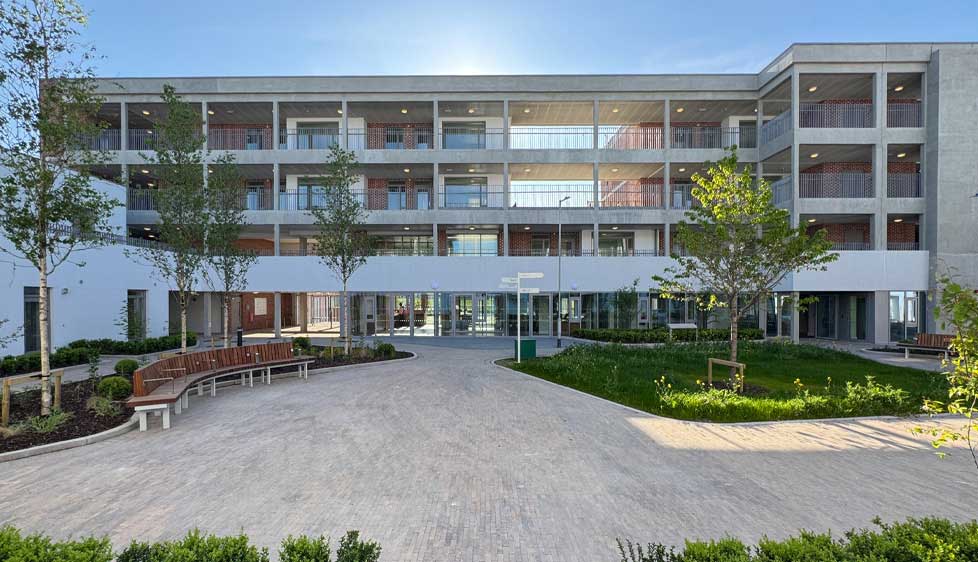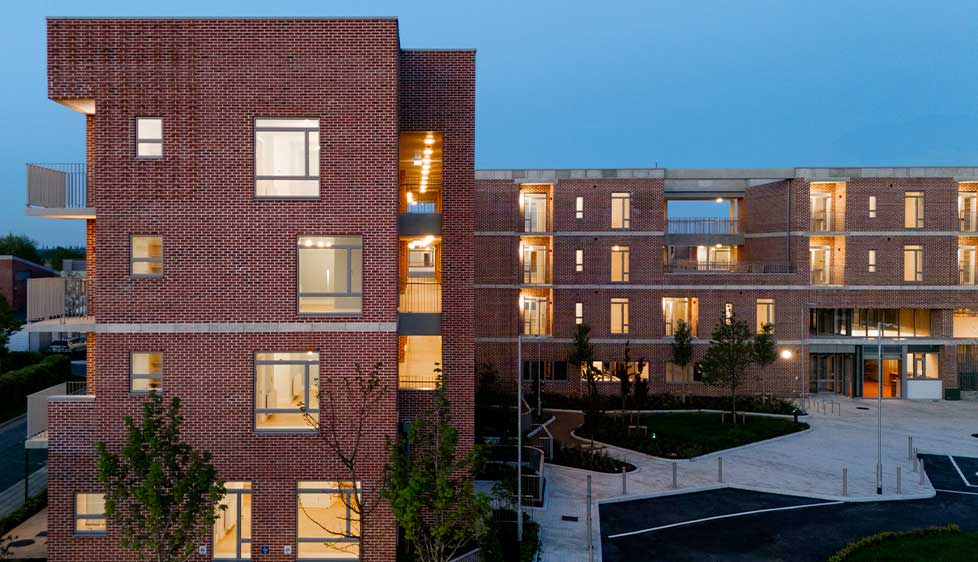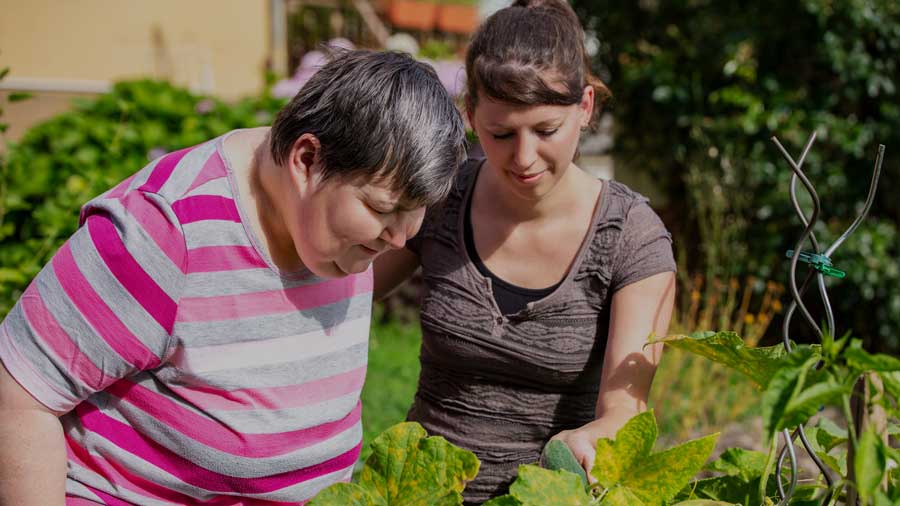Image: Istock
Older people’s housing in Ireland
As assessment of the needs, models and suggestions for a path forward

HEALTH, CARE & SUPPORT

Liz Zacharias
Director, Campbell Tickell

Liz Zacharias
Director, Campbell Tickell
Issue 80 | October 2025
Ireland is confronting the imminent prospect of an ageing population. Planning is much needed for how policy makers, funders and service providers, including Approved Housing Bodies (AHBs), are going to create the kinds of housing, support and care services required. Here, we outline the current needs, challenges and sector requirements.
Data on an ageing population
The Housing Agency’s ‘Summary of Social Housing Assessments 2024’ key findings report identified that:
- The proportion of households with a main applicant over 60 years of age is growing year on year and now makes up 12% of total households. This is a 4.8 percentage point increase on the proportion of households in this age range in 2016 (7.2%).
- The count of households with a main applicant aged 70 years or more increased since the last assessment from 2,108 households in the 2023 count to 2,208 households in 2024 (an increase of 4.7%).
There is also a range of figures regarding the projected growth in the older population:
- A Department of Health report (published December 2024) projected that over the next 20 years the 65-74 age group will increase by 60%, while the 85-plus age group will grow by 150%.
- The Central Statistical Office estimates that the older population will grow from 15% of the Irish population in 2022 to between 28% and 32% of the Irish population in by 2057.
Furthermore, much research and policy work has set out the issues, identifying the need for more age-appropriate housing and a wider, more age-friendly society. For example, a pathfinder project has delivered a new supported housing model at Inchicore. (See images below and: A pioneering model of supported housing - Housing Ireland Magazine.)
There is also currently a Commission on Care for Older People underway looking at the provision of health and social care services and support for older people. This commission must look at the provision of home care services, how care can be provided to older people in specialist housing and – arguably more importantly – how care is defined.
of households have a main applicant who is over 60 years old
projected growth in the Ireland's population in the 65-74 age group over the next 20 years
projected growth in the 85+ age group over the next 20 years
In early 2025, Circle completed Richmond Place, a purpose-built, 52-apartment supported housing scheme designed to enable people to age in place with dignity, independence, and community connection.

In early 2025, Circle completed Richmond Place, a purpose-built, 52-apartment supported housing scheme designed to enable people to age in place with dignity, independence, and community connection.

Key issues
Our recent work at Campbell Tickell with Approved Housing Bodies (AHBs) on issues related to older persons’ housing identified the following issues:
a) Funding: There is no clear funding framework that takes account of the additional costs incurred in building specialist housing for older people. Funding for communal areas such as communal lounges, social activity spaces, etc being a case in point
Types of care: There is no recognition that, while some older people may not require physical or nursing care, many still need support to manage their home and lives independently. This support typically includes:
- help with cleaning, laundry and shopping
- assistance with small repairs or ‘housekeeping’ tasks, such as changing lightbulbs
- guidance to access essential services
- encouragement and facilitation to participate in social or community activities
Such support enables independence and provides advocacy for accessing broader services beyond traditional care
b) Support funding: Linked to the above in point a), there is no recognised funding stream for providing this kind of support
c) Age-appropriate building targets: There is no formal programme or target to expand age-appropriate or specialist housing, despite active development and clear sector appetite
d) Finance model: There is no finance model for creating this housing to meet the needs of different markets, housing for sale, rent or cost rental
The focus of government policy is to retain people in their existing homes and communities – and this is generally what older people want. However, remaining in their own home does not need to mean their existing home if it is not fit for purpose, cannot be adapted to be made fit for purpose or it is under-occupied.
Providing alternative, suitably adapted accommodation and care, has the potential to release under-used family-sized housing and to contribute to reducing Ireland’s housing crisis.
Webinar
To discuss these issues in some detail, Campbell Tickell hosted a webinar chaired by me and my Campbell Tickell colleague, John O’Connor, on 3 September. Many thanks to our excellent panellists (see Box 1) who contributed, and the 120 people from local authorities, government departments, AHBs and charities who attended – all concerned with the housing needs of an older population.
Webinar panellists
- Bruce Moore, CEO, Housing 21
- Declan Gaffney, National Technical Programme Manager, Age Friendly Ireland
- Dr Emer Coveney National, Programme Manager, Age Friendly Ireland
- Joe Gallop, Clann Housing Manager, Clúid Housing
- John Hannigan, CEO, Circle VHA
- Kath Cottier, CEO, Fold Housing
- Roslyn Molloy Head of Policy, Practice & Communications, The Housing Agency
- Dr. Jerry Cowley, Institute of Rural Health, Co. Mayo
The key takeaways from the webinar were:
- Demographic urgency: Many more homes suitable for older people will be needed, alongside planning for an increased demand for care and community infrastructure.
- Care spectrum: Ireland needs a range of housing options, from independent living to specialist care, with clear pathways between them and integrated support.
- Policy and funding: Funding models need reform to encourage new build housing for older people that is accessible, with communal facilities and allows for increasing care needs. These homes must meet the diversity of older people’s tenure and income.
- Design matters: Universal and dementia-friendly design enables independence, safety, and ageing in place.
- Health and social wellbeing: Clearly recognise the need for health and social wellbeing initiatives as a core part of the older persons’ housing offer – as distinct from personal care – and that this also needs to be funded.
- Community connection: Loneliness and isolation are major public health concerns. Housing must support social inclusion and resident-led community building.
- Cross-departmental collaboration: Ireland was the first WHO-recognised age-friendly country and ongoing cross-government collaboration is a strength to build on.
- Rural inclusion: Community-led models show what’s possible. Rural housing needs more support and recognition.
- Strategy: And finally, a national strategy for older persons’ housing is essential!

“Funding models need reform to encourage new build housing for older people that is accessible, with communal facilities and allows for increasing care needs.”
There is now an opportunity to design a framework and system that can ensure that all older people in Ireland have a home that is safe, secure, easy to manage and maintain. Alongside this that they can remain connected to their community, sustain their wellbeing, and receive the care they need when they need it.
To discuss any issues from the webinar or on Older People’s Housing, please contact Liz Zacharias or Holly Holder.

